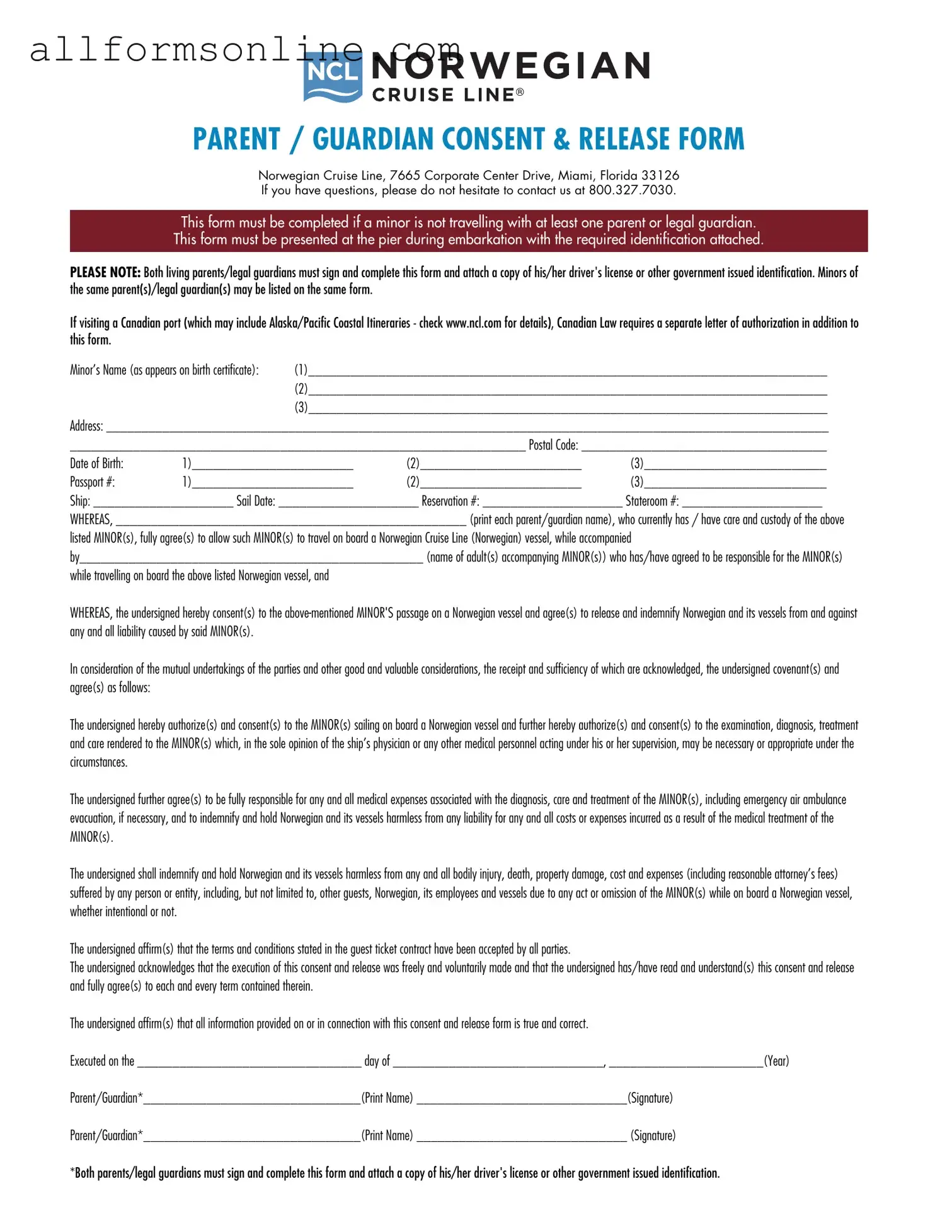What is the NCL Parental Consent form?
The NCL Parental Consent form is a document required for parents or guardians to provide permission for their children to participate in certain activities or programs. This form ensures that parents are informed about the nature of the activities and agree to the terms and conditions outlined in the document. It is often used in educational settings, extracurricular activities, and other youth programs.
Who needs to fill out the NCL Parental Consent form?
Parents or legal guardians of minors participating in specific programs or activities must complete the NCL Parental Consent form. This includes events organized by schools, sports teams, and community organizations where minors are involved. It is essential for ensuring the safety and well-being of children during these activities.
Why is the NCL Parental Consent form important?
The NCL Parental Consent form serves several important purposes. Firstly, it protects the organization or school by confirming that parents are aware of and agree to the activities their children will engage in. Secondly, it provides a legal safeguard, ensuring that the organization has the necessary permissions to involve minors in various programs. Lastly, it fosters communication between parents and organizations, promoting transparency and trust.
What information is typically required on the NCL Parental Consent form?
Generally, the NCL Parental Consent form will ask for the child's name, age, and details about the specific activity or program. Parents will also need to provide their contact information, emergency contacts, and any relevant medical information. Additionally, there may be sections where parents can indicate any specific concerns or conditions regarding their child's participation.
How is the NCL Parental Consent form submitted?
The submission process for the NCL Parental Consent form can vary depending on the organization. Typically, parents can submit the form either in person or electronically. Some organizations may require a physical signature, while others may accept digital signatures. It’s important to check the specific submission guidelines provided by the organization to ensure compliance.
What happens if a parent does not sign the NCL Parental Consent form?
If a parent does not sign the NCL Parental Consent form, their child may not be permitted to participate in the related activities or programs. Organizations often require this consent to ensure that they have the necessary permissions and to protect themselves from liability. Parents should communicate with the organization to discuss any concerns or questions regarding the consent process.
Can a parent revoke consent after signing the NCL Parental Consent form?
Yes, a parent can revoke consent after signing the NCL Parental Consent form. However, it is crucial to communicate this decision to the organization as soon as possible. Revoking consent may affect the child’s ability to participate in ongoing activities, and the organization may have specific procedures in place for handling such requests. Parents should ensure they understand the implications of revoking consent before making this decision.
